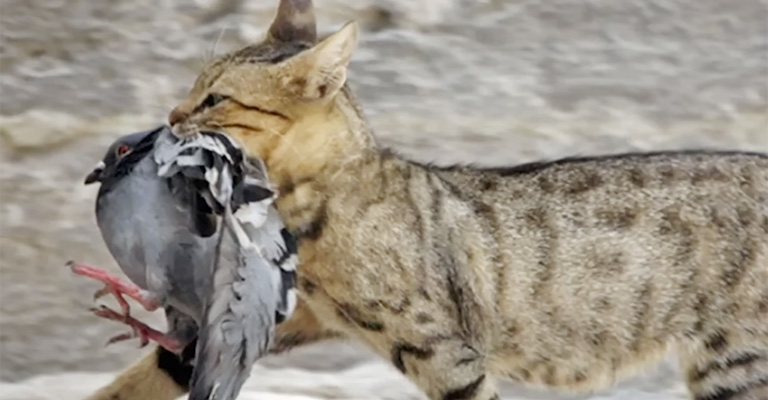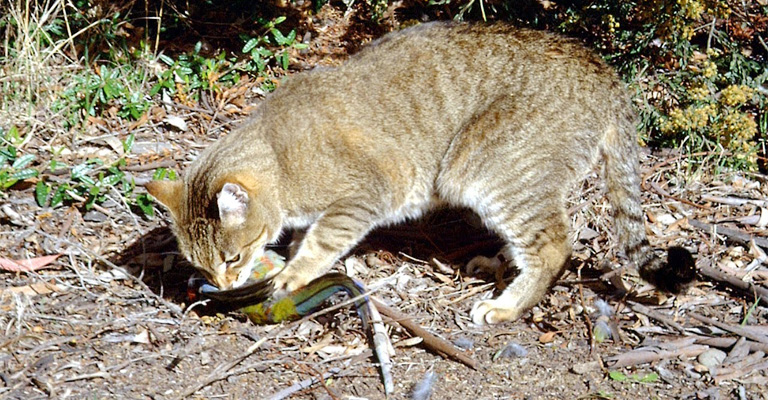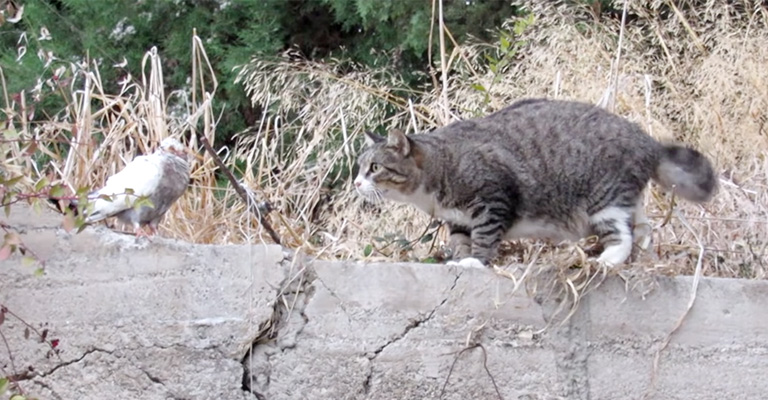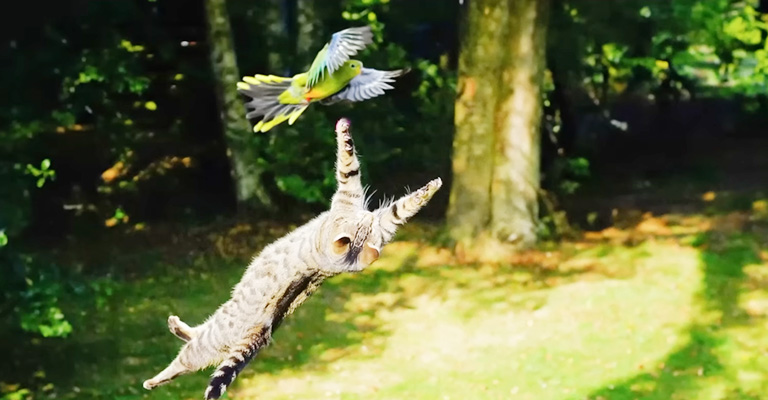Australia, renowned for its diverse and unique avian fauna, faces a pressing ecological challenge: the role of domestic cats in the decline of its bird populations.
These beloved pets, cherished by many, are also skilled hunters, posing a significant threat to the country’s native birds.
In this exploration, we delve into the question: How many birds do cats kill in Australia, and why? Australia boasts an array of remarkable bird species, from colorful parrots to iconic emus, all of which play vital roles in their respective ecosystems.
However, the presence of domestic cats, both feral and owned, has sparked concerns about their impact on these feathered inhabitants.
Understanding the scale of this issue and the underlying factors driving it is crucial for wildlife conservation efforts. Join us on this journey to uncover the intricate relationship between cats and birds in the land Down Under.

How Many Birds Do Cats Kill in Australia and Why?
The exact number of birds killed by cats in Australia is difficult to determine precisely due to various factors and limitations in data collection.
However, studies and estimates suggest that domestic and feral cats collectively kill millions of birds each year in Australia. According to some reports, cats kill about 272 million birds each year in Australia. Several reasons contribute to this issue:
Hunting Instinct
Cats are natural predators, and their hunting instincts drive them to pursue birds and other small animals. Even well-fed domestic cats often engage in hunting behavior.
Bird Vulnerability
Australia is home to numerous bird species, many of which have evolved in isolation and are not well-equipped to defend against introduced predators like cats.
Habitat Loss
Urbanization and habitat destruction reduce natural bird habitats, bringing them into closer contact with domestic cats.
Feral Cat Population
Feral cats, which have become established in many parts of Australia, are especially prolific hunters and have a significant impact on native wildlife.
Nocturnal Predation
Cats are crepuscular and nocturnal hunters, which means they are active during dawn and dusk, times when many bird species are also active. This increases the chances of cat-bird encounters.
Opportunistic Predation
Cats are opportunistic predators, and they target not only adult birds but also nestlings and fledglings, posing a threat to multiple stages of a bird’s life cycle.
Invasive Species
Cats in Australia are an introduced species, and many native birds lack the evolutionary adaptations to defend against them, making them particularly vulnerable to cat predation.
Range Expansion
Cats are highly adaptable and have expanded their ranges across various Australian ecosystems, increasing their access to diverse bird species.
Impact on Ecosystems
Beyond direct bird predation, cats can indirectly affect bird populations by disrupting ecosystems.
For example, when cats prey on small mammals that serve as seed dispersers, this can affect plant regeneration, which in turn impacts bird habitats.
Lack of Natural Predators
Domestic cats have few natural predators in Australia, allowing their populations to thrive and exacerbating their impact on bird populations.
Efforts to address this issue involve responsible pet ownership, such as keeping cats indoors or providing outdoor enclosures, spaying/neutering to control feral cat populations, and conservation initiatives to protect bird habitats.
Understanding the scale of the problem and taking proactive measures are essential to protect Australia’s unique birdlife.
How the Government Is Responding to the Crisis?

The Australian government has taken several measures to respond to the crisis of domestic cats impacting bird populations. These efforts primarily aim to mitigate the negative effects of cat predation on native wildlife. Some of the key responses include:
Legislation and Regulations
The government has enacted and enforced regulations related to cat ownership. In some areas, there are laws requiring cat owners to keep their pets indoors or within enclosed outdoor spaces, especially in sensitive wildlife zones.
Trap-Neuter-Return (TNR) Programs
Some local governments have initiated TNR programs for feral cat management. These programs involve trapping feral cats, neutering or spaying them, and then returning them to their original locations to control their populations.
Conservation Initiatives
The government funds and supports various conservation initiatives aimed at protecting critical bird habitats. These efforts include habitat restoration, revegetation, and predator-proof fencing to keep cats away from vulnerable bird populations.
Public Awareness Campaigns
Public awareness campaigns educate cat owners and the general public about the impact of cats on wildlife and the importance of responsible cat ownership.
These campaigns encourage actions like keeping cats indoors, using outdoor enclosures, or walking cats on a leash.
Research and Monitoring
Government agencies often fund research into cat behavior, ecology, and their impact on wildlife. This research helps inform policy decisions and conservation efforts.
Collaboration with Stakeholders
The government collaborates with wildlife conservation organizations, local councils, and community groups to develop and implement strategies for cat management and bird protection.
Funding for Pest Control
Some government funding is directed towards pest control programs that target feral cats to reduce their impact on native wildlife.
Education in Schools
Some educational programs in schools include lessons about the impact of invasive species like feral cats on the environment. This helps instill conservation values in future generations.
Overall, the Australian government recognizes the importance of addressing the crisis of cats impacting bird populations and is actively engaged in a multi-faceted approach to protect its unique and diverse avian fauna.
These efforts aim to strike a balance between the welfare of domestic cats and the preservation of native bird species.
Impact of Feral Cats in Australia

Feral cats have had a significant and detrimental impact on the Australian environment. Their presence has disrupted native ecosystems and led to a decline in many native species. Here are some key aspects of the impact of feral cats in Australia:
Predation
Feral cats are highly efficient hunters and pose a major threat to native wildlife. They prey on a wide range of animals, including birds, mammals, reptiles, and insects. This predation can lead to the decline or extinction of vulnerable and endangered species.
Loss of Biodiversity
Feral cats have contributed to the extinction of several Australian bird and mammal species. Their hunting pressure has particularly affected ground-dwelling birds, small mammals, and reptiles.
Disruption of Ecosystems
Feral cats disrupt ecosystems by altering the behavior and population dynamics of their prey. This can lead to cascading effects throughout the food web, impacting vegetation and other wildlife.
Competition with Native Predators
Feral cats compete with native predators, such as marsupials and birds of prey, for food resources. This competition can further reduce the populations of native species.
Disease Spread
Feral cats can carry diseases that may affect both wildlife and domestic animals, posing additional threats to ecosystems and agricultural areas.
Range Expansion
Feral cat populations have expanded their range across various Australian landscapes, including arid and remote regions. This expansion increases their impact on a wider range of ecosystems and species.
Difficult Control
Managing feral cat populations is challenging due to their elusive nature and rapid reproductive rates. Conventional control methods, such as trapping and poisoning, often require ongoing efforts and can have unintended consequences.
Efforts to address the impact of feral cats in Australia include the implementation of control programs, research into more effective control methods, and the protection of critical habitats.
These measures are part of a broader strategy to conserve native biodiversity and restore ecological balance in a country known for its unique and diverse wildlife.
Do All Cats Kill Birds in Australia?

Not all domestic cats in Australia are avid bird hunters, and the extent to which individual cats engage in bird predation can vary.
Whether a cat hunts birds depends on various factors, including their individual instincts, upbringing, and environment. Here are some considerations:
Natural Instincts
Cats are natural hunters, and all cats have some degree of hunting instinct. However, the intensity of this instinct can vary among individuals.
Upbringing
Cats that were raised in environments where they learned to hunt from an early age may be more inclined to hunt birds. Cats that have never been exposed to hunting opportunities may be less likely to do so.
Feeding Habits
Well-fed cats that receive balanced meals may be less motivated to hunt for food, including birds. Cats that are hungry or have an unbalanced diet may be more inclined to hunt.
Access to Outdoors
Cats that have outdoor access are more likely to encounter birds and other wildlife. Indoor cats have limited opportunities for hunting, so their impact on bird populations is generally lower.
Age and Health
Older or less healthy cats may be less active hunters than younger, healthier cats. While not all cats in Australia actively kill birds, it’s important to recognize that even a single cat with a strong hunting instinct can have a significant impact on local bird populations.
To mitigate this impact, responsible pet ownership practices, such as keeping cats indoors or providing outdoor enclosures, are encouraged to protect native wildlife.
FAQs
Both domestic and feral cats pose threats to native bird populations, but feral cats are often considered a more significant threat due to their larger numbers and their ability to survive and reproduce in the wild.
Domestic cats that roam outdoors can also contribute to bird predation.
Cat owners can take several steps to reduce their cats’ impact on birds, including keeping them indoors, providing outdoor enclosures or cat runs, and supervising outdoor time with a leash and harness.
The impact of cats on bird populations can vary across regions in Australia. Areas with high concentrations of vulnerable or endangered bird species, as well as regions with extensive urbanization and habitat loss, may experience more severe cat-related bird predation.
Controlling feral cat populations in Australia involves a range of methods, including trapping and euthanizing, using toxic baits, and employing guardian animals like trained dogs to protect wildlife.
Research into more humane and effective methods for feral cat control is ongoing.
Not addressing the issue of cats killing birds in Australia can have serious consequences for the country’s native biodiversity.
Some potential outcomes include further declines or extinctions of vulnerable bird species, disruptions to ecosystems, reduced pollination and seed dispersal.
Conclusion
The impact of domestic cats on Australia’s bird populations is a multifaceted issue that demands attention. While it’s challenging to pinpoint the exact number of birds killed by cats, studies have shown that their predatory behavior has contributed to declines in various bird species.
Several factors contribute to this issue, including the prolific hunting instincts of cats, the loss of natural habitats due to urbanization, and the presence of feral cat populations.
Conservation measures such as responsible pet ownership, the implementation of feral cat control programs, and habitat preservation are essential steps to mitigate this problem.
The protection of Australia’s unique avian biodiversity requires a balance between the joys of cat ownership and the conservation of native wildlife.
Awareness, education, and collaborative efforts between cat owners, conservationists, and policymakers are vital in ensuring a future where both cats and birds can coexist harmoniously in this remarkable continent.